Fish Survey: Adventures in Citizen Science at Lubberland Creek
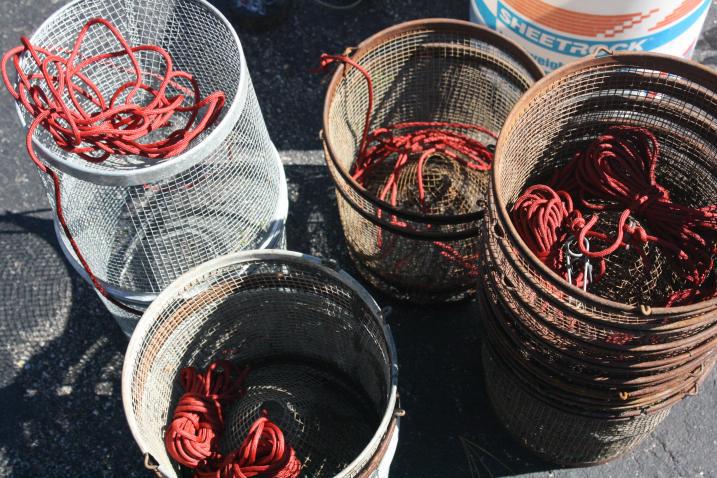
Earlier in the month, I dusted off my rarely used and long-neglected waders, stressed about my (lack of) aquatic identification skills, and headed into the field for a day of fish surveying.
Let me back up a bit and admit my wildlife biologist bias – I love mammals. Don’t get me wrong – I grew up on the ocean, can spend endless hours reading on the beach, and even spent one summer in college working on a brook trout research project in southern New England. But when it comes to my academic and professional career, I have continuously made the decision to work with furry, legged creatures over scaly, swimming ones. It’s not that I don’t appreciate and respect water-dwelling species and my colleagues who work with them. It’s just that most biologists end up specializing, and for me – from working with mice, to bats, to moose, to bunnies - fuzzy, land-dwelling critters have always had my heart.
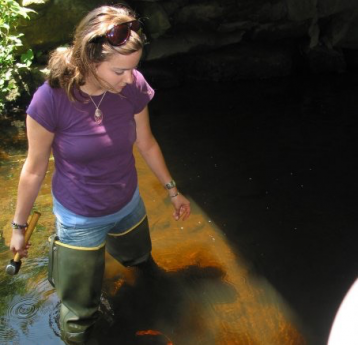
So, when a volunteer opportunity came through Nature Groupie to collect data on the fish communities of Lubberland Creek in Newmarket, I was surprised by my initial reaction – I am definitely going to sign up for that! Volunteers were going to learn about the stream restoration project, be trained in fish collection methods, and then head into the field to seine for fish, collect fish traps, and record data on what was collected. And no experience in fish identification was necessary – which was good for a mammal-lover, like myself. The fish surveys were being led by my colleague Alyson Eberhardt, who coordinates the Coastal Research Volunteers (CRV), a group of citizen science volunteers who work with local coastal researchers on a variety of projects.
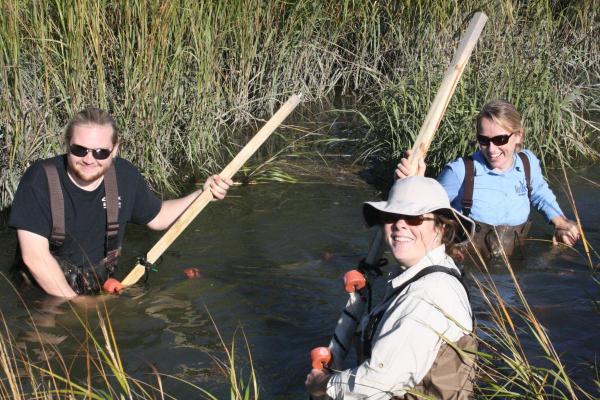
I think I know what sparked my initial enthusiasm to grab a clipboard, jump into a stream, and wrangle any number of fish species – and my guess is that it’s the same thing that inspires a lot of citizen scientists to participate in all sorts of volunteer opportunities. I was going to contribute to science! There is a real need to help monitor Lubberland Creek prior to and after the restoration project, and I was excited about being able to collect and contribute data that was going to help a loved, local habitat improve. And I was going to learn while I was doing it! The science-nerd in me can always appreciate learning new species identifications, new ways of measuring and collecting things, and getting new ideas for how to improve our natural resources – even if it was all about fish.
So, I signed up and headed out one October morning with a group of nine other Coastal Research Volunteers, Alyson, and staff from The Nature Conservancy (who own the property around Lubberland Creek and are collaborators on the project). We got an overview of the situation – there’s a culvert that is currently undersized and perched (raised above the stream water level), which disrupts the flow of water and keeps critters from being able to move between upstream and downstream habitats. They’re in the process of designing and funding an adequate culvert to restore proper streamflow. In the meantime, they need to understand how current fish populations are being affected, and establish a baseline so they can monitor changes in fish populations once the habitat is restored.
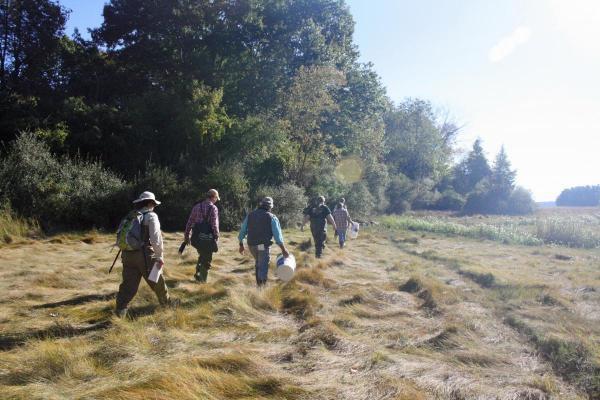
We all slipped (okay, some of us wrestled) on our waders, and headed to the salt marsh in the downstream section of Lubberland Creek. We worked in small groups – some dipped into the water with a seine net, walking slowly downstream to collect whatever fish came in their path. Others collected water samples and took measurements like dissolved oxygen, pH, and temperature – all things that will tell us about the water quality where the fish were collected. And other groups retrieved minnow traps that had been placed in the stream the day before, to count and measure whatever was caught inside. This was repeated in four different locations along Lubberland Creek, both upstream and downstream of the problem culvert.
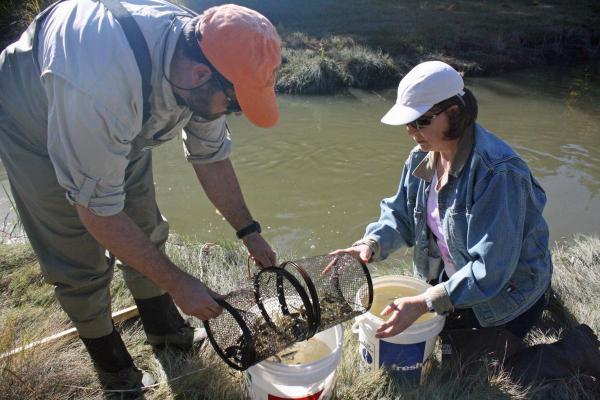
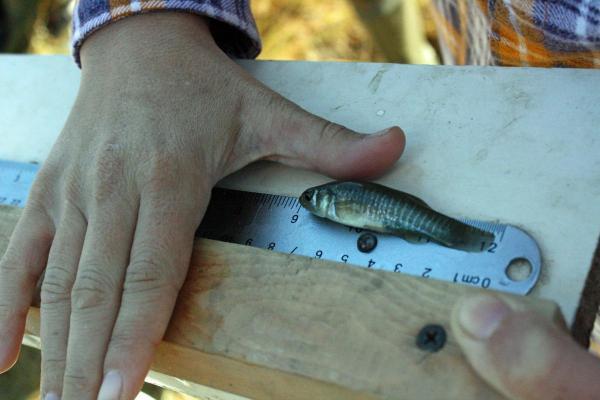
We caught a lot of mummichogs (a minnow-like fish with a name that’s fun to say), a white perch, and saw a baby snapping turtle swim by as we sampled water quality. We learned how to properly maneuver seine nets along a stream bottom and measure fish using a ‘fish board.’ Just like my fellow citizen scientists, I got to play the part of a fisheries biologist for the day. It didn’t matter so much what the topic was – I was happy to be outside, learning as I went, and contributing to important scientific research needs right here in New Hampshire. I learned some new things, practiced some new skills, and worked alongside some great new people. The data we collected will provide information about the fish communities currently using the creek, and will be used to evaluate the impacts of restoration efforts on Lubberland Creek fish communities in the future.
Now, back to land for me.
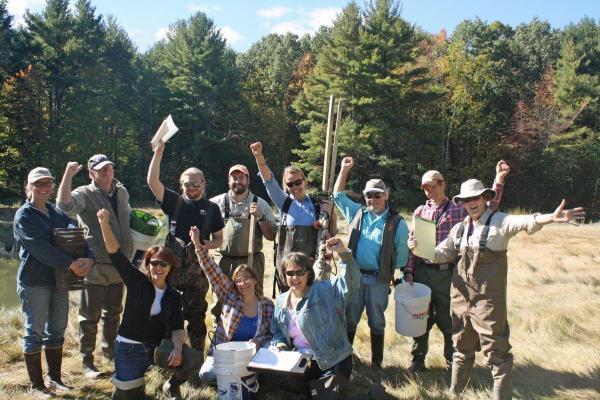
Are you interested in learning more about citizen science and stewardship opportunities with the Coastal Research Volunteers? Click here to visit their website, or contact Alyson Eberhardt at alyson.eberhardt@unh.edu.
This project was funded, in part, by NOAA's Office for Coastal Management under the Coastal Zone Management Act in conjunction with the NH Department of Environmental Services Coastal Program.